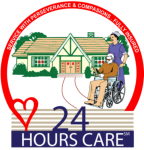Parkinson’s Disease
Parkinson’s is a chronic condition that primarily affects movement. It is caused by the breakdown of brain cells that create a substance called dopamine. Dopamine acts as a chemical messenger to the parts of the brain that control movement. Lack of sufficient dopamine causes the typical Parkinson’s symptoms of tremor, slow movement, stiffness, and problems with balance and walking.
After Diagnosis
Parkinson’s diagnosis is one of many challenges that you have faced and will face throughout your life. Please use this information to help you take charge, and live a full, meaningful, and joyful life with Parkinson’s.
Keep Moving
Exercise improves overall health and well-being for everyone, but it has special benefits for people with Parkinson’s. A regular program of moderate exercise can help control your symptoms, help you continue to enjoy your daily activities, and enhance your comfort, mobility, and quality of life.
Flexibility Exercise
Exercises designed to improve flexibility involve moving your trunk, arms or legs to a position where you begin to feel slight tension or pulling. This pull is the soft tissues (muscles, tendons, ligaments and joint structures) telling you they’ve reached the limit of their comfort zone.


















